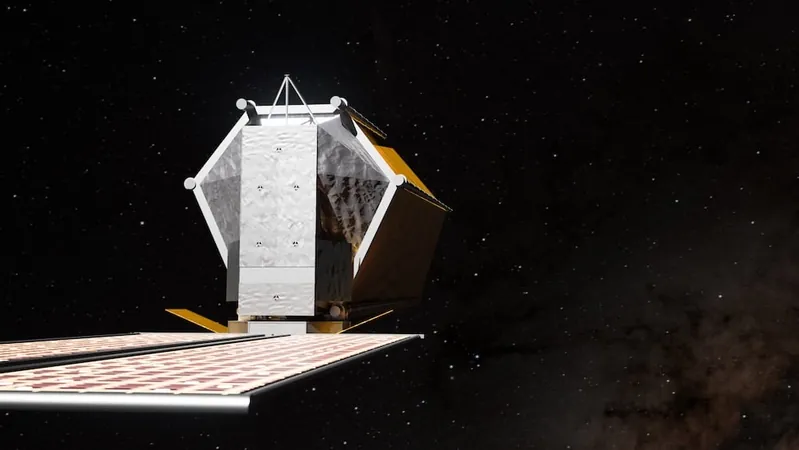
Unlocking the Secrets of Life's Origins: NASA's Groundbreaking Telescope
2025-07-09
Author: Arjun
A Quest as Old as Humanity
For millennia, humanity has pondered one of the most profound questions: how did life begin? Now, scientists are gearing up to potentially unravel this cosmic mystery with NASA's upcoming Habitable Worlds Observatory (HWO), which will probe planets beyond our Solar System for clues.
Testing Theories Beyond Mars
Led by Sukrit Ranjan from the University of Arizona, a research team advocates for an innovative approach. Instead of confining their search for life to labs or Mars, they plan to apply the HWO to scrutinize various exoplanets. Their ingenious idea is to observe enough celestial bodies to test different theories of life's origins against actual data.
Three Competing Theories of Life's Beginnings
The researchers have categorized existing life-origin theories into three core groups, each with unique predictions. One theory proposes an exceedingly rare set of conditions necessary for life to materialize; suggesting that life may not exist within 33 light-years of Earth. For instance, some chemical pathways insist that life requires multiple specific environments to interact perfectly, rendering the emergence of life from non-living matter highly improbable.
Conversely, other suggestions—like life blossoming around alkaline vents—imply that life can easily arise wherever fundamental conditions are met. This perspective posits that any planet boasting liquid water and specific atmospheric conditions will see life flourish, as these environments naturally mitigate energy imbalances.
The Power of the HWO
What sets the HWO apart is its remarkable capability to detect chemical signatures of life within planetary atmospheres. For instance, if it identifies even a single biosphere, it would debunk theories positing that life is exceedingly rare. In contrast, discovering no signs of life across 20 to 50 planets would bolster the rarity hypothesis.
Larger Samples for Deeper Insights
Larger sample sizes pave the way for complex examinations. Model surveys indicate that studying at least 50 exoplanets could uncover links between past ultraviolet (UV) radiation levels and the presence of life, thereby directly testing theories reliant on UV exposure. Moreover, discovering correlations between biosignatures and planetary features like oceans and continents could strongly validate specific origin scenarios.
Design Impacts and Future Discoveries
The research emphasizes that for meaningful data, the HWO should focus on surveying broad populations of at least 50 characterized planets. This insight will significantly influence the design of the observatory, leaning toward expansive surveys rather than detailed studies of select worlds.
The HWO must pinpoint not just biosignatures but also key planetary traits including oceans, continents, and atmospheric compositions. Tracking brightness changes as planets orbit their stars will help identify signatures of oceans and continents, while spectroscopic measurements will reveal vital atmospheric gases.
A New Era in Astrobiology
This research marks a monumental leap in astrobiology. Instead of simply questioning, "Is there life out there?" scientists will soon ask, "How does life begin?" The HWO aims not only to catalog potential living worlds but also to examine long-debated theories surrounding the emergence of life.
The ramifications of this groundbreaking research extend beyond scholarly interest. Unearthing the processes that lead to life's origins could enhance our quest for habitable planets, steer future explorations, and deepen our understanding of our place in the universe.

 Brasil (PT)
Brasil (PT)
 Canada (EN)
Canada (EN)
 Chile (ES)
Chile (ES)
 Česko (CS)
Česko (CS)
 대한민국 (KO)
대한민국 (KO)
 España (ES)
España (ES)
 France (FR)
France (FR)
 Hong Kong (EN)
Hong Kong (EN)
 Italia (IT)
Italia (IT)
 日本 (JA)
日本 (JA)
 Magyarország (HU)
Magyarország (HU)
 Norge (NO)
Norge (NO)
 Polska (PL)
Polska (PL)
 Schweiz (DE)
Schweiz (DE)
 Singapore (EN)
Singapore (EN)
 Sverige (SV)
Sverige (SV)
 Suomi (FI)
Suomi (FI)
 Türkiye (TR)
Türkiye (TR)
 الإمارات العربية المتحدة (AR)
الإمارات العربية المتحدة (AR)